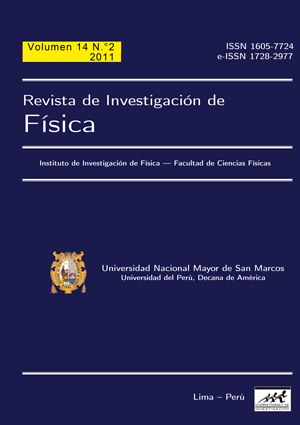Spatial and temporal variability of chlorophill a in the Peruvian sea using MODISAQUA images
DOI:
https://doi.org/10.15381/rif.v14i02.8702Keywords:
Chlorophill a, satellite images, MODIS, OceanographyAbstract
The chlorophill a in the Peruvian sea must be measured by means of remote sensing in the visible range. The objective of the present work is to determine the chlorophill a concentration using MODIS images from the Peruvian sea. The mean monthly concentration maps of chlorophill a of January, February, March and April of 2006 year has been obtained from the MODIS-AQUA images. In each monthly image the chlrophill a concentration is greater near to coastline and decrese gradually far from the coast. In the Northern coast (0-5°S), the chlorophill a vary between 0.05 to 0.5 g/cm3 and it disperse far from the coast. In the Central coast (5°-15°S) the chlorophill a vary between 10 to 30 g/cm3, it’s more dense in the coastline and diminished conform the distance from the coast is increased. In the Southern coast (15°-20°S) the chlorophill a vary between 3 to 5 g/cm3 very near to the coast. From January to April of 2006 year, these values has been diminished slowly due to the seasonal change.Downloads
Published
Issue
Section
License
Copyright (c) 2011 M. G. Quezada García, R. I. Paredes Peñafiel, F. Carrillo Gomero, J. Rojas Acuña

This work is licensed under a Creative Commons Attribution-NonCommercial-ShareAlike 4.0 International License.
THE AUTHORS RETAIN THEIR RIGHTS:
a. The authors retain their trademark and patent rights, as well as any process or procedure described in the article.
b. The authors retain the right to share, copy, distribute, perform and publicly communicate the article published in the Revista de Investigación de Física (for example, place it in an institutional repository or publish it in a book), with an acknowledgment of its initial publication in the Revista de Investigación de Física.
c. The authors retain the right to make a subsequent publication of their work, to use the article or any part of it (for example: a compilation of their works, notes for conferences, thesis, or for a book), provided that they indicate the source. of publication (authors of the work, journal, volume, number and date).






